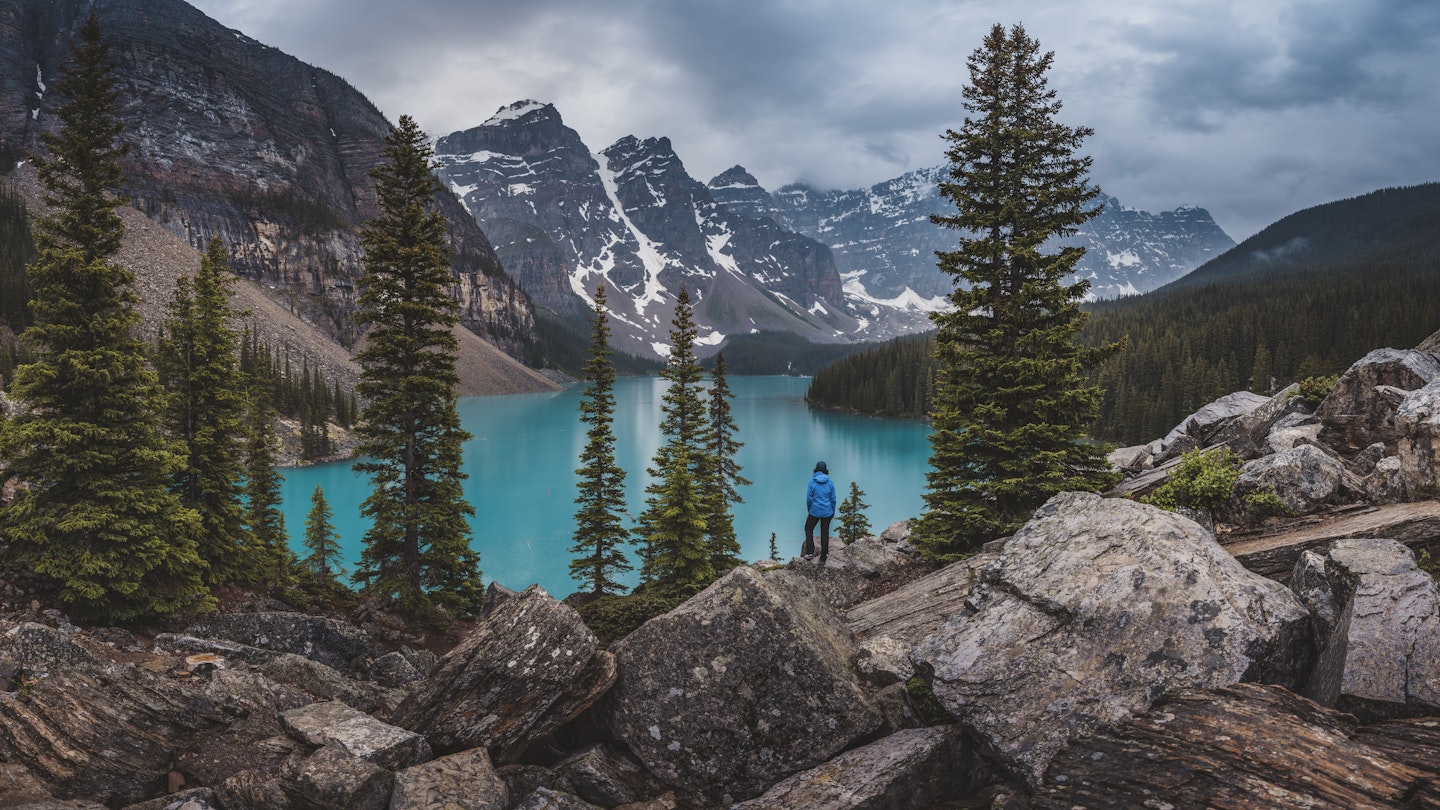Ultimate Guide to Banff National Park
A piece of Canadian history, Banff National Park is the world’s third-oldest national park and, over the course of its 140-year existence, has successfully balanced easy access with environmental protection. Home to some of Canada’s most iconic landscapes, Banff attracts over four million visitors annually, all while maintaining its delicate ecological integrity.

When Should I Go to Banff National Park?
Unlike many Canadian national parks, Banff is a year-round destination due to its three ski resorts and a plethora of winter activities. However, summer is arguably the best time to visit. Most facilities are open between Victoria Day (mid-May) and Labor Day (early September), making it a favorable time for visitors.
Bear in mind that higher altitude trails and campgrounds can remain snowbound until late June or early July. Additionally, summer wildflowers bloom in subalpine areas from late June to early September, with July offering the most vibrant displays. The ski season typically runs from early November until late April or May.
How Much Time Should I Spend in Banff National Park?
Banff National Park receives a lot of drive-through traffic, with many visitors exploring only the shops and sights in Banff Town. To experience the park more fully, allocating at least three days is suggested. A week allows for deeper exploration, especially for those interested in camping or long-distance hikes, enabling two to three weeks to discover the park’s ample backcountry.

How Do I Get to Banff National Park?
The closest airport is Calgary International, located 145 km (90 miles) to the east of the park. Highway 1, also known as the Trans-Canada Highway, passes directly through the park from east to west. Although it is possible to reach Banff without a car, having one allows for more flexibility and spontaneous stops along the scenic routes.
Getting Around Banff National Park
Once in the park, getting around is relatively straightforward. Banff has a local public transit network that connects various attractions. There are numerous options for transportation, including seasonal shuttles to popular destinations within the park.

Top Things to Do in Banff National Park
Hike Amid Wildflowers in Healy Meadows
Healy Meadows, located near the border of Alberta and British Columbia, offers stunning views and fewer crowds compared to Sunshine Meadows. The scenic trek through the forest rewards hikers with a vibrant carpet of wildflowers framed by majestic peaks.
Sip Tea Beside Lake Agnes
The Lake Agnes Teahouse, accessible via a scenic 3.5 km (2.2 miles) hike from Lake Louise, provides a warm cup of tea and sweet snacks amidst dramatic mountain scenery.
Dip an Oar in Vermillion Lakes
This trio of marshy lakes is ideal for wildlife viewing and leisurely canoeing. Renting a canoe from local outfitters allows you to paddle through serene waters surrounded by spectacular landscapes.
Mountain Bike the Goat Creek Trail
The Goat Creek Trail, spanning 19 km (12 miles), connects Banff and Canmore, offering an exhilarating mountain biking experience with varying terrain suitable for riders of all levels.
Ski into the Skoki Lodge
The historic Skoki Lodge provides an idyllic base for skiing and hiking in both winter and summer, surrounded by captivating wilderness.

How Much Money Do I Need in Banff National Park?
Banff can be quite pricey compared to other regions in Canada due to high visitor demand and limited accommodations. To save money, consider staying in nearby Canmore which offers a range of budget options. Camping is also a more affordable alternative, but spots fill up quickly during peak seasons.
Typical Prices
- Double room in a Banff hotel (summer): C$400
- Campground: C$19.75–78
- Backcountry camping per night: C$13.50
- National Park pass: C$11
- Bike rental per day: C$50
- Ski pass: C$124–165
- Dinner mains: C$30–45

Are There Some Good Day Hikes?
Yes, Banff National Park offers an array of day hikes rated easy, moderate, and difficult. Trails are well-maintained and clearly marked.
Easy trails include:
- Sunshine Meadows (10 km / 6.2 miles)
- Consolation Lakes (2.9 km / 1.8 miles one-way)
- Parker Ridge (2.7 km / 1.7 miles one-way)
Moderate trails include:
- Cascade Amphitheater (7.7 km / 4.8 miles one-way)
- Larch Valley (4.3 km / 2.7 miles one-way)
- Helen Lake (6 km / 3.7 miles one-way)
Difficult trails include:
- Cory Pass Loop (13 km / 8 miles)
- Paradise Valley (10.3 km / 6.4 miles one-way)
- Sunset Pass (8.2 km / 5.1 miles one-way)
Are There Any Backcountry Lodges?
Banff National Park features three backcountry lodges accessible via hiking, biking, or skiing. Reservations are required, and these lodges offer food and rustic accommodations.
Where Are the Best Places for Wildlife?
Vermilion Lakes is a fantastic spot for observing wildlife such as waterfowl and moose. For grizzly bear spotting, Whitehorn Mountain is a prime location during the summer months. Additionally, the Bow Valley Parkway presents excellent opportunities to see bighorn sheep, black bears, elk, and more.
Can I Rent a Kayak or Canoe?
You can rent kayaks or canoes at various locations, but bringing your own can save you money. Rental prices differ, with options available at Lake Minnewanka and the Bow River, where you’ll find user-friendly facilities for paddling adventures.




